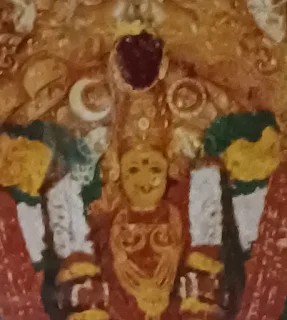Navaratri is a Hindu festival, celebrated in India in regard to the divine goddess Durga and forms, or "roopas" of Durga Devi.
These forms are worshipped on each of the nights of Navaratri. The forms of Durga Devi have significance, and the forms represent various characteristics of the goddess. The nine "roopas" of Durga are celebrated across India during Navaratri:
The first form of Durga Devi is Shailaputri Devi known as Parvati Devi:
Represents the purest embodiment of Durga Devi.
Vahanam: Vrushabha
Trishul on the right hand and lotus flower on the left hand.
The second form of Durga Devi Brahmacharini Devi:
Characteristics are devotion, penance, and austerity.
Brahmacharini Devi is depicted on bare feet with a mala on the right hand and a Jalapatram on the left hand.
The third form of Durga Devi is Chandraghanta Devi:
Characteristics of beauty and grace and is worshipped for peace, tranquillity, and prosperity.
Vahanam: a lion
The fourth form of Durga Devi is Kushmanda:
Kushmanda Devi is believed to have created the universe with a smile.
Vahanam: a lioness
The fifth form of Durga Devi is Skandamata Devi:
Mother of Skanda or Kartikeya, commander in the war against demons.
Vahanam: a lion with baby Skanda on her lap.
The sixth form of Durga Devi is Katyayani Devi:
Born to the sage Katyayana and took the warrior form.
Vahanam: a lion.
The seventh form of Durga Devi is Kaalratri Devi:
Durga Devi with dark and ferocious looks.
Characteristics: Protection and remover of all troubles.
The eighth form of Durga Devi is Mahagauri Devi:
Bestower of purity and serenity.
Vahanam: a white bull.
The ninth form of Durga Devi is Siddhidatri Devi:
Characteristics are supernatural powers.
Depicted to be seated on a lotus.
Navaratri is dedicated to nine forms of the goddess, and there exist specific rituals and offerings to Devi.
